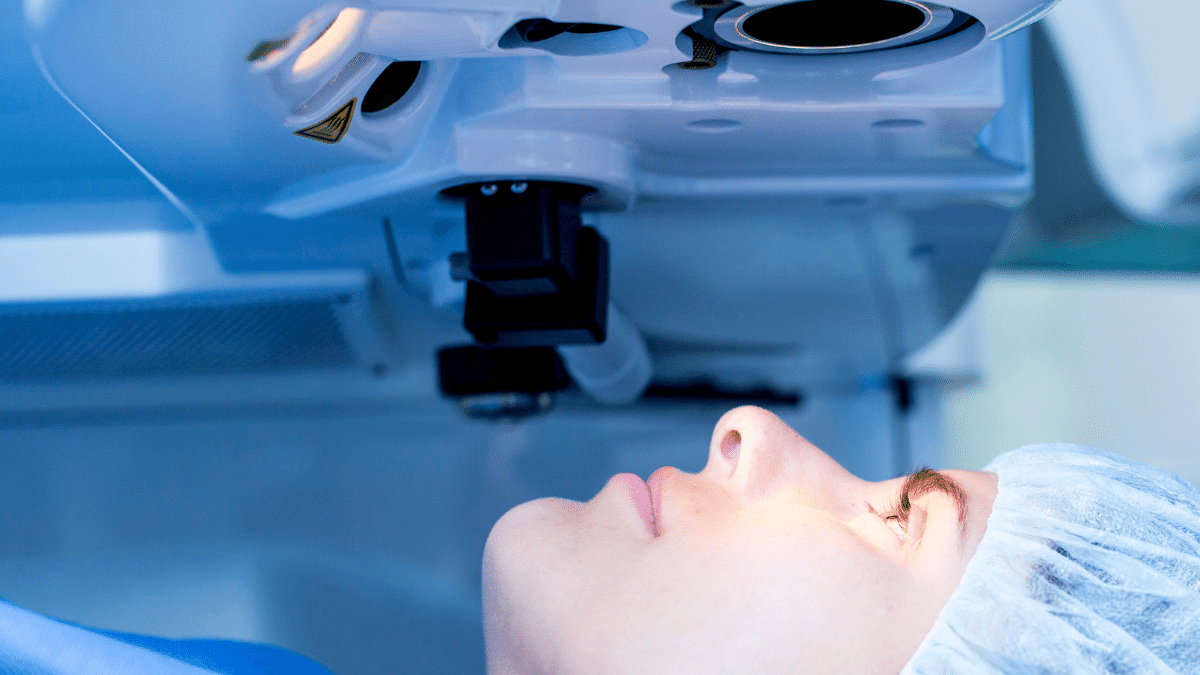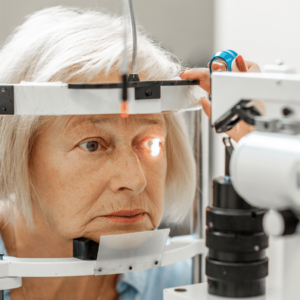PRK vs LASIK:What is the Difference?
Photorefractive keratectomy, as PRK and laser-assisted in situ keratomileuses or LASIK, are laser procedures used to help improve vision. PRK has been used for a long time, but both of these procedures are common today. They can both be used to help correct any vision problems that you may be experiencing.
PRK and LASIK are used to help make modifications to the cornea in the eye. The cornea is composed of five transparent thing layers. They will cover the front of the eye and help refract and focus on the light used for vision. This will allow you to see. You will have better vision and will be able to go on without eyeglasses or contact lenses.
PRK and LASIK are used to correct the vision by reshaping the tissue of the cornea.
When having PRK, the eye doctor will remove the top layer from the cornea. This layer is called the epithelium. The eye doctor will use the laser to reshape the cornea and fix any curves that may be irregular. This will help improve your vision.
With the LASIK procedure, an eye doctor can use lasers or a small blade to make a flap in the cornea. The flap is raised, which will allow the doctor to give the cornea a new shape. The flap is then lower back onto the eye. The cornea will be able to repair itself. It will take a couple of months, but there is no additional surgery needed. You will see an improvement in your vision at this time.
Either of these procedures can be used to help deal with some current eye issues. They include:
- Nearsightedness is the inability to see objects in the distance.
- Farsightedness is the inability to see things that are close to you.
- Astigmatism is the irregular eye shape that will lead to blurry vision.
If you have any of these issues, keep on reading to learn how these two procedures are similar and different.
You will then be able to make an informed decision if either procedure is right for your vision needs. This will help you see better, and you will better enjoy your life.
How do These Procedures Work?
These procedures will work similarly to reshape irregular tissue on the cornea. They use lasers or small blades.
They differ in some big ways.
PRK removes the top layer of the tissue on the cornea.
LASIK creates a flap to open to the tissue and the flap is closed again when the procedure has been completed.
What Happens When you Have PRK?
When you have this procedure, you will be given drops to numb the eye not to feel pain. Your eye doctor may also give you some medication to help you relax. This will help you with any jitters that you may have about this procedure.
The top layer of the cornea tissue will be removed from the eye. This takes around 30 seconds to complete. The procedure is rapid and is very useful.
The excimer laser will be used to fix any irregularities in the tissue. This will take around a minute to complete. The entire procedure will take less than 30 minutes to complete and even with the surgery’s prop time.
There will be a special bandage put on top of the cornea to help the tissue heal.
What Happens During the LASIK Procedure?
You will be given special drops to numb your eyes.
A small flap will be cut into the epithelium. A special tool called a femtosecond laser is used to do this. The surgeon will then remove the small layer to the side and will use a laser to reshape the other tissue layers. Since the epithelium is still attached, it is put back into place after the surgery and is not removed.
The laser is used to reshape tissue and fix eye curvature.
The flat is placed over the tissue and allows it to heal.
PRK vs. LASIK: What’s Recovery Like?
When you have either of the procedures, you will feel some discomfort or a little pressure. You may notice a change in your vision. You should not feel any pain.
To recover fully from PRK, you can expect it to take around a month. To recover from LASIK, you can expect to recover within a couple of days, but the full healing will take several months.
PRK Recovery
After you have the PRK procedure, a small contact like bandage will be placed over your eye. It may cause a little irritation and may be sensitive to light as the eye heals. Your vision will be blurry until this bandage is removed. It will stay on your eye for around a week.
You will be prescribed lubricating eye drops to keep the eye moist. Your doctor may also give you some medication for pain or discomfort.
After the procedure, your vision will be better, but it may be a little worse until the eye heals. Your doctor will tell you not to drive while your eyes are healing.
The healing process will take around a month. Your vision will improve each day, and you will get checkups until your eye has healed.
LASIK Recovery
After having this procedure, you will see more clearly. You may even have close to perfect vision by the next day.
You will not experience pain as your eye is healing. You may feel slight burning a couple of hours after surgery, but it should stop.
Your eye doctor may recommend lubricated, or medical eye drops to help if there is any irritation. This should be gone in a few days.
Which Procedure is More Effective?
Either technique is effective at helping to improve your vision. The difference lies in the recovery time.
LASIK takes a few days to be fully recovered, while PRK may take around a month. The final results will be the same if a qualified surgeon performs them.
PRK is said to be safer in the long term because it does not leave a flap on the eye. The flap that is there from LASIK may become damaged if the eye suffers an injury.
Are There Risks?
There are some risks with each procedure
LASIK may be slightly riskier because there is a flap created in the cornea.
Some of the possible risks with these procedures may include:
Dryness in the eyes. LASIK may make it hard to produce tears for up to six months. In some cases, the dryness may be permanent.
There may be changes in your vision. You may experience glares when looking at bright lights or reflections. There may also be halos around lights, and you may see doubles. You may not be able to see well at night. This should be gone in a couple of weeks, but it may be permanent in some cases. If these symptoms do not fade, be sure to speak to your eye doctor.
There is the possibility of under correction. Your vision may not improve. There is a higher increase if you are having surgery for nearsightedness. If you are not happy with the results, you may need follow-up surgery.
Visual distortion can happen. More corneal tissue than needed may be removed, which can lead to ectasia. Your cornea may be weak, and there may be pressure inside your eye. This will need to be resolved, so you do not lose your eyesight.
Astigmatism may happen if the corneal tissue is not removed correctly. You may need to how another procedure or you may need eyeglasses.
There may be complications with the LASIK flap. This may lead to an infection. If the epithelium does not heal properly, you may have discomfort or vision trouble.
There is a chance of permanent vision loss; there is always the risk of this with any eye procedure. You may have some cloudy or blurry vision after the procedure.
The Ideal Candidates for Each Procedure?
For each procedure, there are some basic requirements that you need to meet:
- It would help if you were over the age of 18
- You had no significant vision changes in the past year.
- Your vision may be able to be improved to 20/40
- If you are nearsighted, you will need to have a prescription of -1.00 and -12.00 diopters and measure the lens strength.
- You are not pregnant or breastfeeding.
- Your pupil is about 6mm in a dark room.
Not everyone can have both procedures.
You may be eligible for one surgery and not the other.
- You may have chronic allergies that will impact the healing.
- You have a health condition that affects your eyes, such as diabetes or glaucoma.
- You may have an autoimmune condition that can have an impact on your healing, such as lupus.
- You have thin corneas that may not be able to handle either procedure. This will often disqualify you for LASIK.
- You have large pupils that will put you at an increased risk for vision problems.
- You may not be able to have LASIK.
- You have eye surgery in the past, which will put you at an increased risk for complications.
PRK vs. LASIK: The Cost
Both procedures will cost between $2,500 and $5,000.
PRK may have a higher cost than LASIK because more checkups are needed, and the eye will need to be monitored over a month.
Both of these procedures are said to be elective and are not covered by health insurance.
If you have a health savings account or a flexible spending account, you may use either plan to help with the cost. There are different options with different health plans offered.
What are the Pros and Cons of These Procedures?
There are some pros and cons to both procedures.
LASIK
Pros
- Around 4 days to recover
- There are no stiches or bandages
- Fewer follow up appointments
- High success rate
Cons
- Risk of complications from a flap
- Not recommended for people with a high risk for injury
- Greater chance for dry eyes
- Increased risk for poor night vision
PRK
Pros
- Successful
- No flap
- Reduced chance of long term complications
- The high rate of success
Cons
- Takes around 30 days to recover
- Requires bandages
- Discomfort can last for a few weeks
How do I Find a Provider?
There are some tips on finding a provider to perform either of the procedure and the questions that you should be asking them.
- It would help if you looked into a couple of providers located close to you. You need to compare their experience, price, ratings from patients, the type of technology they use, and their success rates. Some surgeons will have more experience, and others will have higher training and better approval rates.
- You should not select an option based on price, and you should not go for the lowest price. Saving money may put you at an increased risk for compilations. There are other areas of your life where you can save money.
- You should not settle for any type of advertisement claims. You should not believe any specific guarantee or results. Even an experienced doctor cannot guarantee 100 percent success. There is a small chance of complications, even with the most experienced surgeon.
- You should read all information and waivers. You should read all paperwork before you sign it. Be sure to follow the pre and post o instructions and any other paperwork given to you.
- Your eye doctor should provide you with realistic expectations. You may not have 20/20 vision after the procedure. You should be able to see better, and your vision should be better before any surgery is performed.
Summing It Up
LASIK and PRK are both excellent options to help correct your vision.
It would help if you spoke to your eye doctor and eye care specialist about which option is better for you and your specific needs. This can help with your overall eye health and your health in general.






